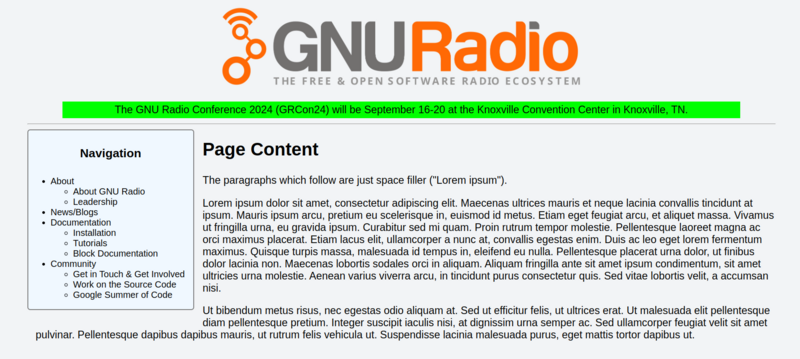User talk:Duggabe: Difference between revisions
Jump to navigation
Jump to search
No edit summary |
(Replaced content with "== Notes on new GNU Radio website design == General website notes: * light theme * high contrast * use WAVE Web Accessibility Evaluation Tools * News and Blog items should be current. There is no point in showing past events like GRCon23 or old versions of GNU Radio in the News. This is my concept for the design: 800px <hr>") Tag: Replaced |
||
| Line 1: | Line 1: | ||
== | == Notes on new GNU Radio website design == | ||
General website notes: | |||
* light theme | |||
* high contrast | |||
* use WAVE Web Accessibility Evaluation Tools | |||
* News and Blog items should be current. There is no point in showing past events like GRCon23 or old versions of GNU Radio in the News. | |||
This is my concept for the design: | |||
[[File: | [[File:Theme_built_by_Barry.png|800px]] | ||
<hr> | |||
Revision as of 01:13, 27 December 2023
Notes on new GNU Radio website design
General website notes:
- light theme
- high contrast
- use WAVE Web Accessibility Evaluation Tools
- News and Blog items should be current. There is no point in showing past events like GRCon23 or old versions of GNU Radio in the News.
This is my concept for the design:
